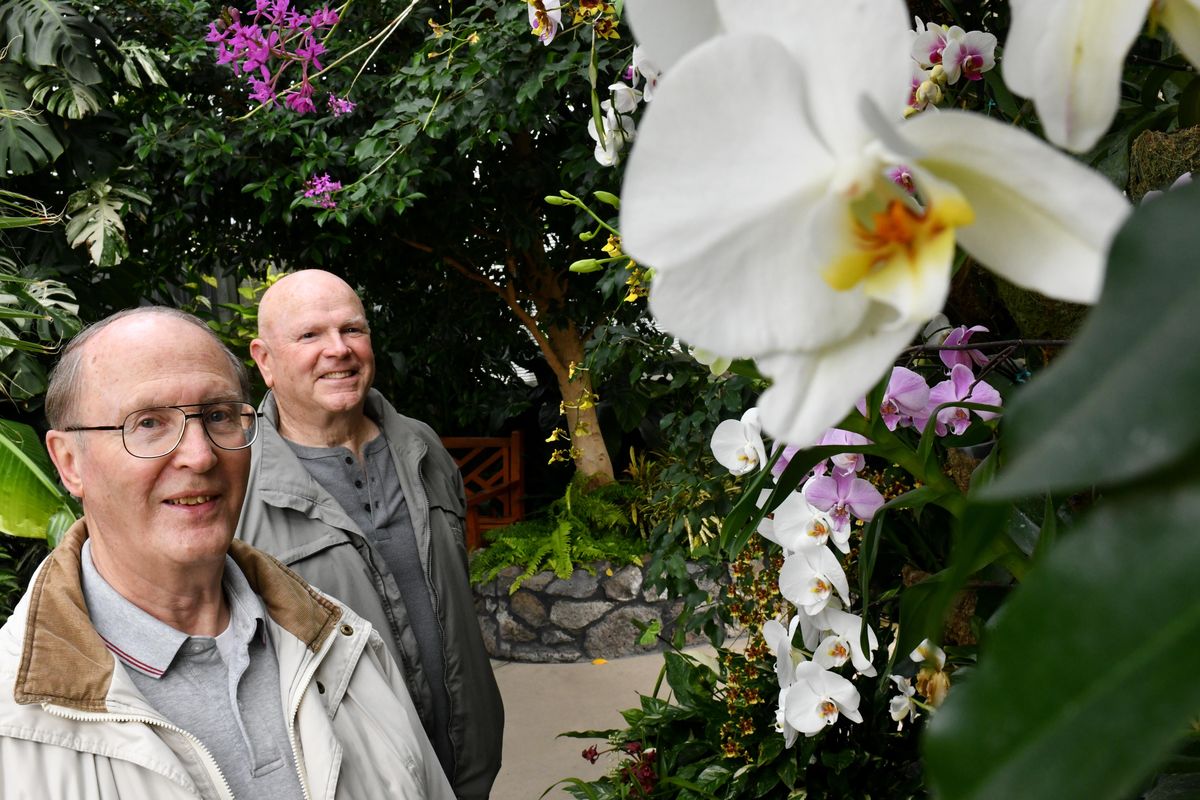In the Garden: With orchids, knowing what not to do is a good starting point

Have you ever attended a gardening class where the instructor told you how to kill your prized plants? Probably not. But when it comes to growing orchids, Spokane Orchid Society president Jim Pearce understands that gardeners often have more success by learning exactly what to avoid doing.
The exotic beauty of orchids makes them the most popular flowering houseplant. We gardeners succumb to their allure, take them home and then wonder how to care for them.
Inland Northwest orchid enthusiasts will have the perfect opportunity to admire hundreds of them at this year’s Spokane Orchid Society Show and Sale, which takes place next weekend in the Spokane Community College Lair. While members can answer all manner of questions about orchid culture, Pearce hopes to arm attendees ahead of time with the truth about some potentially deadly myths.
“Improper watering is the number one killer of orchids,” he recently shared. “Many orchids come from the tropics, so people think they should water them every day. That’s a myth. If you give them too much water, or even too little water, they’re going to die.”
Pearce recommends creating a regular watering schedule of once per week, although he suggests a bit more frequently if a person’s home is extremely dry.

“A related myth is that it’s best to water orchids with ice cubes,” he added. “In the wild, orchids get watered heavily and the water rushes through their roots. Ice cubes will keep the potting medium damp but that’s it. Instead, water the plant, let it drain and set it aside.”
Pearce underscores the importance of having drainage holes in whatever type of container an orchid is planted in.
“You want water to drain through the pot and flush the fertilizer from the roots so it won’t burn them,” he advised. “Think about a rain shower: the water flushes through the roots and doesn’t sit there.”
Another myth debunked by Pearce is that orchids can grow in any type of soil.
“In nature, some grow in humus on the ground, but most grow hanging onto a tree. Since the majority of orchids aren’t terrestrial, the potting medium needs to be open and fast-draining. I start all of my beginners on Phalaenopsis (moth orchids) and a bark mix. Then they can treat it like a regular houseplant, as long as they can see that water is coming out of the bottom of their plant’s pots.”
Looking for a way to slowly kill your orchid? Don’t repot it. Pearce indicated that a normal bark mix will last two to three years. Since the bark will have broken down over time, this means it will hold more water and drown the plant. He suggests adopting a schedule of repotting orchids every two years.
Alan Alexander, Spokane Orchid Society’s publicity chair, listed another common problem: exposing orchids to the cold.
“If an orchid is blooming and you put it where there’s a cold draft, the blossoms will often fall off.”
“Always treat orchids like you want to be treated,” Pearce added. “Keep them away from cold or hot drafts, such as from windows, fans or heaters.”
Alexander also pointed out yet another way to kill an orchid, by allowing water to collect in the leaf axis (where a new leaf emerges from a branch); this causes rotting.
A sure way to weaken or kill an orchid is by failing to monitor for insect pests on the plants.
“Take the time to look for them,” Pearce advised. “The most common insects are scale and mealy bugs. If you’re vigilant, you can get rid of them. And if you purchase a new orchid, isolate it from the others to make sure it is insect-free.”
“The biggest mistake of all,” he added, “is trying to grow orchids that aren’t compatible with your growing environment. Research what will grow in your light and temperature conditions before you make a purchase.”
Show attendees will see a wide variety of orchid types. Vendors will include Botanica, Emerald City Orchids, Jim’s Orchids, Jolah Orchids, Vinn’s Carnivorous Plants, Ken’s Pots, Gunning Orchid Pots, Sip ‘n Paint Studio and a member’s sale table.
Susan Mulvihill is co-author, with Pat Munts, of “Northwest Gardener’s Handbook.” Contact her at Susan@susansinthegarden.com. Watch this week’s “Everyone Can Grow A Garden” video at youtube.com/c/susansinthegarden.